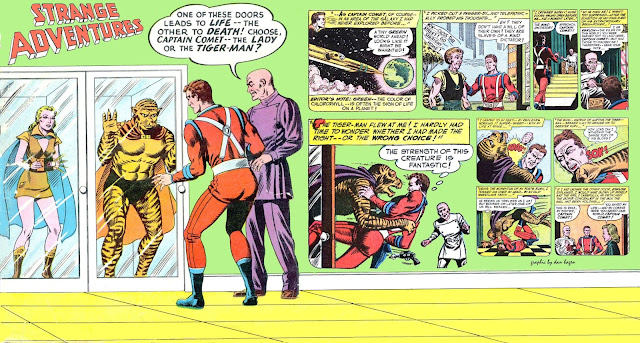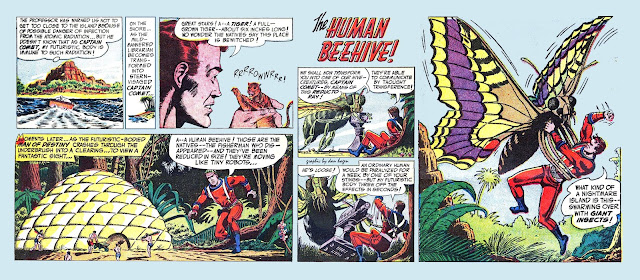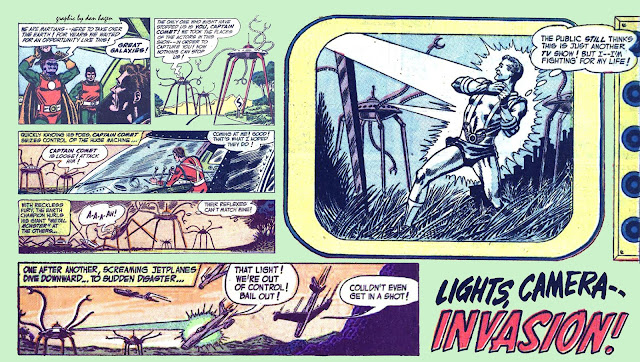August 1953: If They Only Knew...

One of my favorite Captain Comet stories is The Cosmic Chessboard , both because of a sly wink writer John Broome built into the tale and because the concept was echoed in a couple of Silver Age classics. As a writer, I like to retain, recycle and recast material I’ve written when it might be useful again, and DC Comics also long practiced this form of intellectual thrift. For example, compare the Murphy Anderson covers of Strange Adventures 35 ( The Cosmic Chessboard, Aug. 1953) and Justice League of America 1 ( The World of No Return, Oct-Nov. 1960). In both cases, heroes are playing a cosmic chess match that imperils real people, and both stories even feature a dinosaur fin-headed alien who sports a third eye, (one is green-skinned, the other red-skinned). That’s one easy “tell” for recognizing the hand of particular comic book artists, of course. They all tend to have distinctive types of fantasy aliens that they draw. For DC, publishing in an era in which it was exp...





